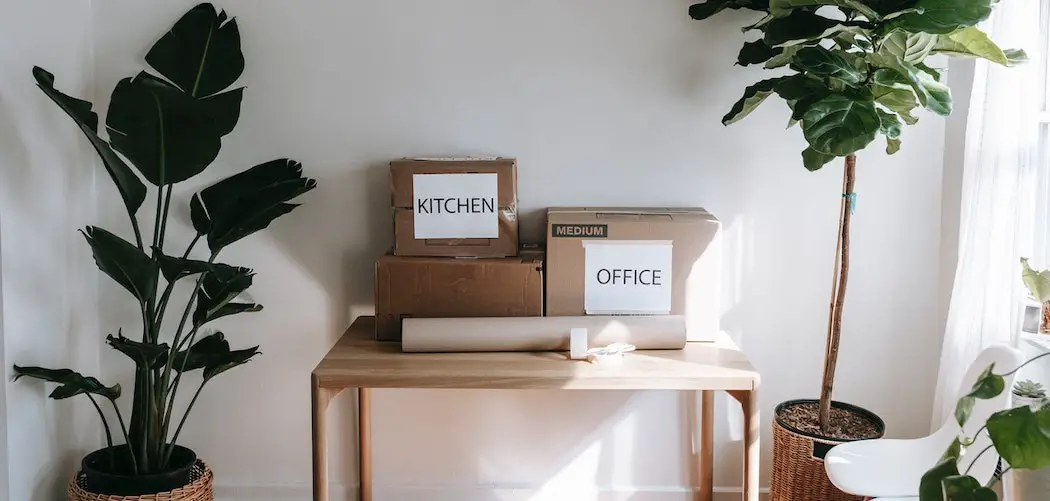If you’ve got lots of plants dotted around your home, or even just a few green friends, you might be wondering whether they’ll benefit from taking little tours of the house.
Do houseplants like to be moved around? Or can moving them often harm them?
The short answer is no, houseplants don’t like to be moved around. There aren’t many reasons to move a houseplant on a regular basis, and they don’t get a lot of benefit from being moved. Actually, they may suffer as a result of it, because of changes to the conditions that they have adapted to.
We’re going to look at the pros and cons of moving plants in further detail, and discuss why you might move your houseplants, how they might benefit, and how they might suffer, so you’ll know when to move your plants and when to leave them alone.
Is Moving Potted Plants Bad?
Moving potted plants is not necessarily a bad thing to do, but it disrupts your plant – and that can be a bad thing. Every time you move your plant, it will have to readjust to the new conditions.
A plant that has just been moved needs to get used to different light levels, potentially a different watering schedule, and different temperatures.
It may also have different humidity to deal with.
Plants make surprising amounts of adjustments to fit in with their environment. The thickness of their epidermis varies, for one thing.
A thin epidermis helps them to absorb more light, so plants in low light tend to struggle if they are suddenly moved into a bright light.
They will also adjust to fit in with the humidity levels, the temperature, and the watering routine.
Their growth will be based on these things, and if any change dramatically and suddenly, they can struggle to adjust. Most will adjust, but it takes time, and is not necessarily good for them, because it interferes with their growth.
You can shock your plants by moving them. Most will not die from this, but they may grow more slowly, or die back a bit while they adjust. If the new conditions are radically different it can even kill the plant, while some hardier specimens will not seem to notice much, however.
Although some plants will cope with being moved much better than others – but remember that in the wild, plants don’t exactly get shunted around. They spend all their time in one spot and while conditions may change a little from time to time, most are constants that change minimal amounts.
Can I Move My Indoor Plants Every Day?
Some people think that moving their indoor plants every day to make the most of different light levels is a good idea – but you’ll see from the above section that it isn’t necessarily.
Putting your plant in low light at one moment and then high light at another can be damaging.
It is fine to move your plants around a bit while you work out which spot suits them best, or when the seasons start to change. It’s also fine to move them if they seem unhappy in their current spot and you feel they are lacking in light, getting too much light, too hot, too cold, etc.
However, you shouldn’t move your plants for the sake of moving them, and certainly not daily. While some plants may not mind it, there isn’t any real benefit to doing it, and others will certainly not like it. There isn’t any reason to move your plants on a daily basis.
If you have a plant that is a real light lover and you need to move it between windowsills to follow the sun – you may find that the plant isn’t really suited to your home.
It’s not ideal to be doing this, and even if it works, it’s not practical.
Neighbors might be happy to water plants if you go away, but they might draw the line at moving them every day.
It’s much better to find a place where the plant can be happy and adjust to the conditions, even if they aren’t ideal – and then leave them to make that adjustment.
Do Indoor Plants Get Stressed If You Move Them Around Often?
Yes, indoor plants do tend to get stressed if you move them too much. Their adaptations to the conditions will constantly be wrong-footed and they will be trying to thicken and thin the epidermis quickly to deal with the varying light.
They may also get shocked by temperature and humidity changes, or struggle with alterations to the watering routine (obviously this depends upon you and your habits).
If you do want to move plants, it’s best to minimize the stress by checking the conditions and seeing how much change you’re imposing on the plant.
Think about the things we have already mentioned. Light levels are probably the key ones to consider. If your plant is going from high light levels to low ones, there’s not much you can do, unless you can provide a plant light.
In fact, I highly recommend on of these affordable desk size LED Grow Lights, it will give you the ability to grow any plant no matter the lighting conditions in your house.
If your plant is going from low to high, consider putting up a shade or partial shade which you can gradually remove as it adjusts.
Similarly, check out things like temperature differences and humidity differences and try to mitigate any dramatic changes if possible.
Keep your watering routine as constant as you can, especially if other things are changing.
These steps will minimize the stress on the plant and make it easier for it to adapt.
Is It Good To Turn Your Plants Around?
Turning your houseplant reasonably regularly is rather different to moving it from room to room, and it can actually be beneficial. Here is why:
In nature, most plants get the full arc of the sun, and this encourages them to grow straight in most cases; light comes from all sides because of the sun’s movement during the day.
In the home, however, light generally comes just from one direction and it is fixed. This makes the plant grow in lopsided ways as it tries to maximize its light intake.
It can be good to turn plants around because plants that aren’t rotated often end up an unbalanced shape. They may be very dense on one side, and very thin on the other, and this can cause them to become unstable, especially with tall plants. Rotating your plant occasionally can help with this.
You do not need to do this on a regular basis – just every couple of months should be sufficient. If your plant is a fast growing one, you may want to increase the frequency, but there’s no benefit (although no particular harm) to doing it daily.

Unlike when you move plants from one location to another, there is unlikely to be an effect on humidity, temperature, or watering, and light levels will also remain constant, even if they are landing on a different part of the plant.
You will encourage better, more even growth by doing this, so it is a great way to get your plant to g
row in a nice shape and produce plenty of leaves in all directions. You can also take this as an opportunity to prune your plant.
You may want to do quarter turns or half turns, depending on the plant or the situation.
Final Thoughts
Moving your houseplant on a regular basis is not a good idea; houseplants should only be moved to allow for the changing seasons or if they are evidently unhappy with their current conditions.
A lot of movement could create shocks to the plant, and more delicate specimens may struggle to survive these, especially if they occur repeatedly.
If you do need to move your plant, try to keep as many of the conditions constant as possible.
Turning your houseplant regularly is a very different process, and should be done with most plants to counteract the fixed nature of indoor lighting.


